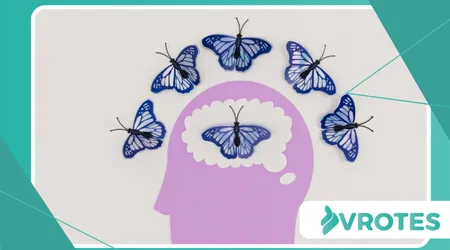How to Use Cognitive Behavioral Techniques for Mood Balance

Cognitive behavioral techniques. Our minds are intricate webs of thoughts, feelings, and beliefs.
Anúncios
They shape our perception of reality. Often, negative thought patterns silently undermine our emotional stability.
Learning to identify these patterns is the first step. Are you prone to catastrophic thinking?
Do you often jump to conclusions? Recognizing these mental traps empowers you.
This self-awareness is not about judgment. It’s about observation. Think of yourself as a detective, unraveling the mysteries of your own mind.
Anúncios
Once identified, these thoughts can be challenged. Are they truly factual? Or are they distorted interpretations of events?
This critical evaluation is a cornerstone of emotional resilience. It prevents rumination and self-defeating narratives from taking root.
Consider the ripple effect of a single negative thought. It can cascade, influencing mood and behavior.
The Power of Perspective: Reframing Your Reality
Reframing is a potent tool in your emotional arsenal. It involves consciously shifting your viewpoint on a situation. This isn’t about denial; it’s about finding alternative interpretations.
Imagine a setback at work. Instead of seeing it as a personal failure, reframe it. Perhaps it’s an opportunity for growth.
This shift in perspective can transform despair into determination. It allows for a more balanced emotional response.
Read here: Breathing Exercises to Instantly Center Yourself During a Flare-Up
It’s like looking at a painting from a different angle. New details emerge. Hidden meanings become apparent.
This technique is especially effective for managing anxiety. It reduces the perceived threat of a situation.
Consider the simple act of labeling emotions. Instead of “I am angry,” try “I am experiencing anger.” This small change creates distance.
This distance allows for objective observation. It reduces the intensity of the emotion itself.

Behavioral Activation: The Link Between Action and Emotion
Our actions directly influence our feelings. When we feel down, we often withdraw. This, however, perpetuates the negative cycle.
Behavioral activation encourages purposeful action. Engage in activities that bring you joy, even if you don’t feel like it.
This might be a simple walk in nature. Or reconnecting with a friend. Small steps can yield significant results.
The key is consistency, not intensity. Even minor positive actions build momentum.
Read more: Mindfulness Practices for Calming Hot Flash Anxiety
Think of it as jump-starting a stalled engine. Initial effort leads to renewed function.
This approach counters the inertia of low mood. It creates a virtuous cycle of positive reinforcement.
A classic example is scheduling pleasant activities. Don’t wait for motivation to strike; create it.
Building Resilience: The Role of Self-Compassion
Self-compassion is often overlooked. Yet, it’s vital for sustained mood balance. Be kind to yourself, especially during difficult times.
Treat yourself with the same understanding you’d offer a friend. Acknowledge your struggles without judgment.
This fosters a sense of inner security. It reduces the harsh self-criticism that fuels anxiety and depression.
It’s about embracing your imperfections. Recognizing that everyone experiences challenges.
Self-compassion is not self-pity. It’s a proactive choice to support your own emotional well-being.
Consider mindfulness practices as a pathway to self-compassion. Observe your thoughts without attachment.
This allows for a gentler engagement with your inner world. It cultivates a more nurturing self-relationship.

The Thought-Emotion-Behavior Loop: A Practical Framework
Understanding the interconnectedness of thoughts, emotions, and behaviors is key. This loop is constantly at play.
A negative thought can trigger an unpleasant emotion. This emotion then influences our behavior.
For example, the thought “I’m going to fail” (thought) can lead to anxiety (emotion). This might result in avoiding the task (behavior).
++ How to Read Labels: Avoid Estrogen Disruptors in Processed Foods
Conversely, positive thoughts can create a positive feedback loop. It’s a powerful dynamic to leverage.
Breaking this cycle at any point can disrupt the entire pattern. This is where cognitive behavioral techniques shine.
If you identify a negative thought, challenge it. If you feel a negative emotion, engage in a positive behavior.
This proactive approach puts you in control. You become the architect of your emotional landscape.
| Component | Description | Example |
| Thought | Internal monologue, beliefs, interpretations | “I’m not good enough.” |
| Emotion | Feelings, moods, affective states | Sadness, anxiety, anger. |
| Behavior | Actions, reactions, avoidance. | Isolating oneself, procrastinating. |
Real-World Application: Overcoming Social Anxiety
Imagine Sarah, who struggles with social anxiety. Her thoughts often tell her, “Everyone will judge me.” This leads to intense nervousness and avoiding social gatherings.
Using cognitive behavioral techniques, Sarah begins to challenge this thought. Is it always true? Has anyone explicitly judged her?
She starts by reframing. Instead of “They will judge me,” she tries, “People might be indifferent, or even friendly.”
Next, behavioral activation comes into play. She commits to attending one small social event each week, even if for a short time.
Initially, it’s hard. But with each successful interaction, her anxiety lessens. She focuses on her breathing and actively listens.
She practices self-compassion when she feels overwhelmed. Instead of self-criticism, she reminds herself, “It’s okay to feel this way. I’m trying my best.”
Gradually, her confidence grows. The negative thought loses its power. Her world expands.
This isn’t an overnight fix; it’s a journey. But with consistent effort, significant progress is possible.
The Science Behind the Shift: Evidence-Based Approaches
It’s not just anecdotal evidence. Cognitive Behavioral Therapy (CBT), the foundation for these techniques, is one of the most widely researched and effective psychotherapies.
A 2020 meta-analysis published in the Journal of Consulting and Clinical Psychology found strong support for CBT’s efficacy across a range of mental health conditions.
Including depression and anxiety disorders. This extensive body of research underscores its validity and practical utility in improving mental well-being.
This robust evidence provides confidence. It assures us that these strategies are not just theoretical constructs.
They are scientifically validated pathways to greater emotional stability. This makes them invaluable tools.
The principles are rooted in how our brains process information. And how we learn and unlearn behaviors.
It’s about retraining neural pathways. Creating new, healthier connections.
Beyond the Basics: Advanced Strategies for Sustained Balance
Once you grasp the fundamentals, you can explore more advanced cognitive behavioral techniques.
This includes techniques like exposure therapy for phobias. Or mindfulness-based CBT for stress reduction.
These build upon the core principles. They offer tailored solutions for specific challenges.
Regular reflection is also crucial. Journaling about your thoughts and feelings can reveal patterns.
This self-analysis deepens your understanding. It allows for more precise interventions.
Remember, the goal isn’t to eliminate all negative emotions. That’s an unrealistic expectation.
Emotions are part of the human experience. The aim is to manage them effectively.
To prevent them from overwhelming you. To maintain agency over your inner world.
Embracing Imperfection: The Journey, Not the Destination
The path to mood balance isn’t linear. There will be good days and bad days. That’s perfectly normal.
The objective is consistent effort. It’s about building a toolbox of strategies.
And knowing when and how to use them. It’s an ongoing process of learning and adaptation.
Think of it like learning to ride a bike. You fall a few times. But each fall teaches you something.
Eventually, you gain balance. You navigate with greater ease and confidence.
Likewise, emotional balance requires practice. Patience with yourself is paramount.
Isn’t it empowering to know you possess the power to influence your own emotional landscape?
Your Roadmap to Emotional Harmony
Mastering cognitive behavioral techniques is a journey of self-discovery and empowerment. It equips you with the tools to navigate the complexities of life with greater resilience.
By understanding your thoughts, reframing your perspectives, and engaging in purposeful actions, you can cultivate lasting emotional harmony.
This isn’t about eradicating negative emotions but about managing them effectively, creating a life filled with purpose and balance. Start today; your emotional well-being is worth the investment.
Frequently Asked Questions
Are cognitive behavioral techniques only for people with diagnosed mental health conditions?
No, these techniques are highly beneficial for anyone seeking to improve their emotional regulation and overall well-being, regardless of a diagnosis. They are practical skills for daily life.
How long does it take to see results from using these techniques?
The timeframe varies for each individual. Some people notice improvements within a few weeks, while for others, it may take longer. Consistency and practice are key to seeing lasting changes.
Can I learn these techniques on my own, or do I need a therapist?
While many resources (books, online courses) can help you learn, working with a qualified therapist is often recommended.
A therapist can provide personalized guidance, support, and help you apply the techniques effectively.
Is it possible to completely eliminate negative thoughts and feelings?
The goal is not to eliminate all negative thoughts and feelings, as they are a natural part of the human experience.
Instead, the aim is to manage them more effectively, reduce their intensity, and prevent them from overwhelming you.
What if I feel overwhelmed or discouraged while practicing these techniques?
A: It’s normal to feel challenged at times. Be patient and kind to yourself.
If you feel overwhelmed, take a break, re-evaluate your approach, or consider seeking support from a mental health professional.
Small, consistent steps are more effective than trying to do too much too soon.
